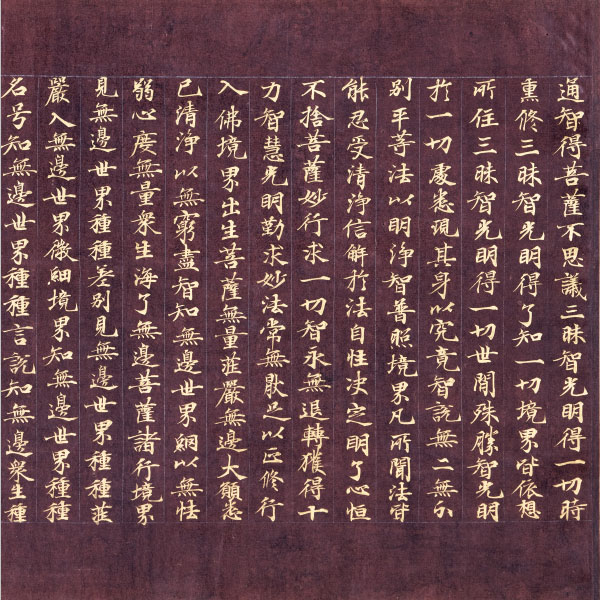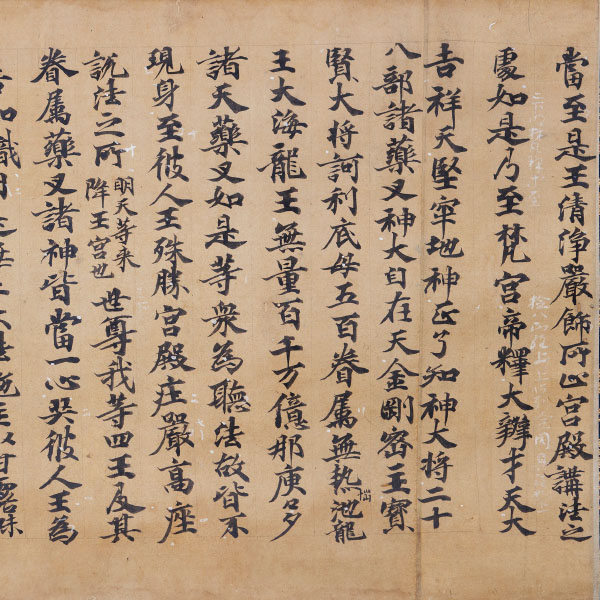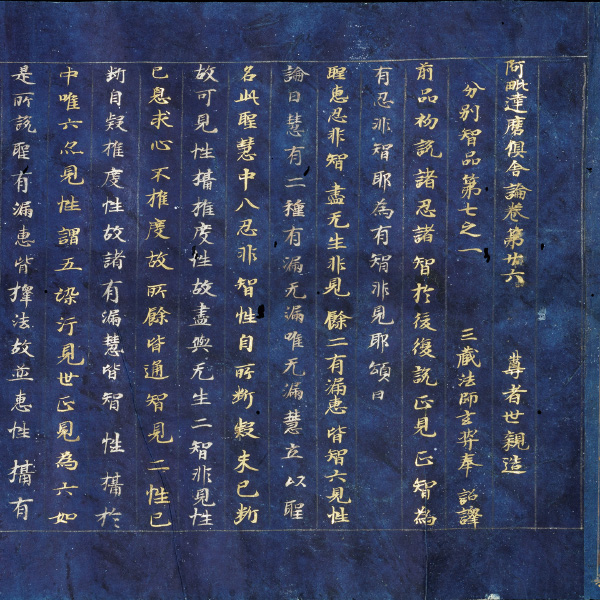
・作者:不詳
・年代:奈良時代(8世紀)
Madhyama Āgama, the 51st volume
Artist: Unknown
Era: Nara period (8th century)
国家事業としての写経が盛んに行われた奈良時代の写経で、この時代の写経は、仏教文化が開花した聖武天皇の治世の元号から、天平写経と呼ばれています。本経の謹厳な書風は天平写経の特徴を良く示しており、細身でしなやかな文字は、天平写経が模範とした中国・初唐の書風を写すものです。
本経には、江戸時代中期に古筆見として知られた神田道伴による寛保二年(1742年)の折紙が付属しており、筆者を「吉備大臣(吉備真備、695~775年)」としています。残念ながらこの鑑定結果は、現在では事実とは認められませんが、本経の書体は、吉備真備在世中の八世紀中頃のものとして良いでしょう。
This sutra transcription from the Nara period, when sutra copying was actively conducted as a national project, is known as Tenpyo sutra transcription, named after the era of Emperor Shomu, who saw the flourishing of Buddhist culture. The solemn calligraphy style of this sutra well represents the characteristics of Tenpyo sutra transcription, with slender and supple characters reflecting the calligraphy style of early Tang China, which served as a model for Tenpyo sutra transcription.
This sutra includes a certificate from Kanpo 2 (1742) by Kanda Michitsugu, known as an expert in ancient calligraphy in the mid-Edo period, attributing the authorship to "Minister Kibi (Kibi no Makibi, 695–775)." Unfortunately, this appraisal is not recognized as factual today, but the calligraphy style of this sutra is appropriate for the mid-8th century when Kibi no Makibi was alive.




